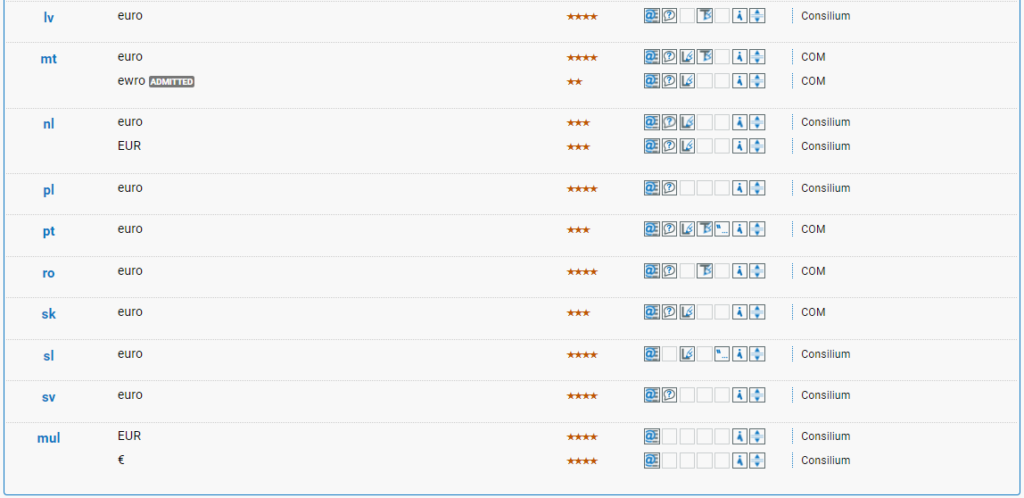This year we celebrate the 20th anniversary of the introduction of the euro as a single currency in the European Union. Let us take a look at some interesting facts about the euro!


History
The introduction of a one single currency for the European Union Member States was laid down in the Maastricht Treaty and started with setting up the Economic and Monetary Union in 1999. On 3 May 1998 an EU Regulation was published stipulating that:
“As from 1 January 1999 the currency of the participating Member States shall be the euro. The currency unit shall be one euro. One euro shall be divided into one hundred cents.”
The formal decision was followed by a transitional three years period given to Member States to adjust their economies to the new currency before fully adopting the single currency.
Interesting facts
- The euro symbol was inspired by the Greek letter epsilon (Є) and it is also the first letter of the name of our continent. The two horizontal lines symbolise stability.
- The euro is the second most important currency in the world. The amount of international payments made with it are almost equal to the ones made with the dollar.
- Each euro banknote’s design represents a certain architectural period from the development of the European civilization. The €50 banknote, for instance, represents the Renaissance period, while the banknote of €20 represents the Gothic times.
- There are six European countries that also use the euro although they are not part of the Union: Andorra, Kosovo, Montenegro, Monaco, San Marino, Vatican City
- A total of seven overseas territories also use the euro as an official currency: Azores and Madeira, Canary Islands, Ceuta and Melilla, French Guyana, French islands in the Caribbean, Mayotte and Réunion and Saint Pierre and Miquelon.
- Each European country that uses the euro can issue two commemorative coins of 2 euros per year. This practice has been in place since 2004. The special design usually marks an important anniversary or historical event for the country issuing the coins.
- Currently there are only four commemorative coins issued jointly by all member states – in March 2007 on the occasion of the 50th anniversary of the Treaty or Rome; in January 2009, for the 10th anniversary of the Economic and Monetary Union; in January 2012 as a commemoration of the 10th anniversary of the euro banknotes and coins; in 2015, to celebrate the 30th anniversary of the European flag.
The European Central Bank as well as the European Parliament will launch further events and initiatives this year to mark this important milestone of the Union. You can follow them here.
References:
Council of the European Union. COUNCIL REGULATION (EC) No 974/98. 3.05.1998. [ONLINE] Available at: https://eur-lex.europa.eu/legal-content/EN/TXT/PDF/?uri=CELEX:31998R0974&from=EN [Accessed 18 February 2022].
European Central Bank. 2022. €2 commemorative coins. [ONLINE] Available at: https://www.ecb.europa.eu/euro/coins/comm/html/index.en.html. [Accessed 18 February 2022].
Pierre. 2022. Les pièces de l’année 2022 – 2Euros.org. [ONLINE] Available at: https://www.2euros.org/2022. [Accessed 18 February 2022].
Présidence française du Conseil de l’Union européenne. 2022. Mise en circulation d’une nouvelle pièce de 2€ – Présidence française du Conseil de l’Union européenne 2022. [ONLINE] Available at: https://presidence-francaise.consilium.europa.eu/fr/actualites/mise-en-circulation-d-une-nouvelle-pi%C3%A8ce-de-2/. [Accessed 18 February 2022].

